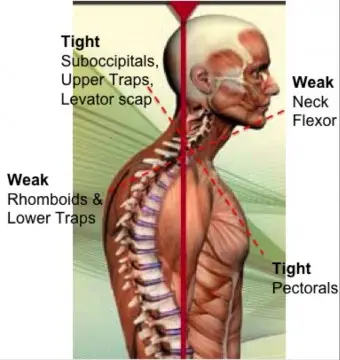
I am sure you have heard a lot about heart health. Everything from diet, hydration, stress management, and sleep affects your heart. Incorporating cardio and respiratory exercises is important, but not everything you need. There are many excellent points to follow, but have you ever thought about heart health and the structure of your body?
The structure of the body is usually discussed in the context of posture, movement, or pain—and all of this is true. The better your structure, the better your position, the better you move, and the less pain you will have. But the structure of your body is fundamental to the health of your organs too. Your organs (viscera) each have a place they’re supposed to be within the body, with “rooms” formed by fascia (connective tissue). If your body is out of balance and your fascia is unhealthy, the space (room) holding your organs is compromised, and they cannot function optimally. It’s like asking you to perform a task with your arms and legs tied—difficult, if not impossible.
Now let’s use your heart as an example. For optimal health, the heart should sit properly on your diaphragm, and the pericardium (heart skin) should provide enough room and properly connect to the neck and sternum.
In the image at the top, the pericardium (green) connects to the sternum (breast bone), C6, C7, and T1 vertebrae (neck), and the diaphragm for support. If any of those connections are tight or out of place, it twists, compresses, or pulls the pericardium, and the heart can’t work well.
Heart Health And Posture

Consider the typical posture we see everywhere—forward head posture. As the name implies, the head is forward of the shoulders. This is usually seen with a rounded back (kyphosis) and a collapsed sternum. Now, take the image of the heart above and place it in this poor posture. When your head is forward, the neck vertebrae slide forward, the connections at the sternum slacken, and the diaphragm—the floor the heart sits on—becomes crooked and compressed.
Now your poor heart is twisted, compressed, and sitting in the wrong place, but you’re asking it to work optimally. This poor posture also reduces your lung volume, meaning less oxygen gets to your body—including your heart. If you’re exerting yourself in this condition, you’re stressing your heart and body—putting it in a position NOT to succeed.
If this sounds familiar, the good news is it’s not a death sentence. Much of what’s “off” is soft tissue, which means you can do something about it if you act soon. Some exercises can open up your neck, pull vertebrae back into position, and correct kyphosis.
If your goal is longevity and vitality, get on a workout program that trains your body from all angles—including your posture and structure. The benefits to your entire being are numerous… because it’s not just working out—it’s building a foundation for a better life.
Learn more about total-body structure and heart health programs:
Heart Health and Holistic Fitness Programs
Find out more @

Leave a Reply